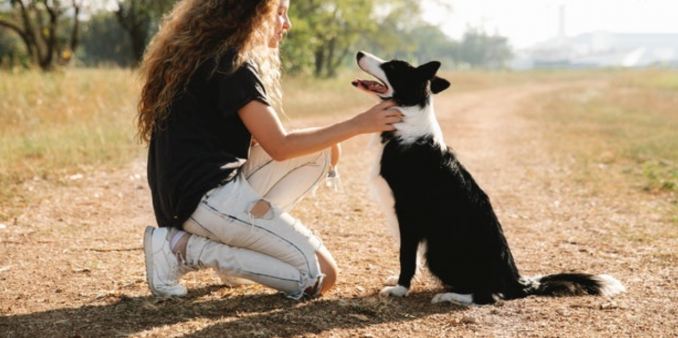

Dogs are incredibly expressive creatures, using a complex combination of vocalizations, body language, and facial expressions to communicate with humans and other animals. Understanding these signals is essential for building a strong bond with your dog and interpreting their emotional state accurately. By learning to “read” your dog’s body language, you can respond to their needs and ensure their overall well-being.
How Dogs Communicate
Dogs communicate primarily through body language, but they also use vocalizations and scent marking as supplementary methods. Their communication can be categorized into three main areas:
- Body Language: Includes posture, tail movement, ear position, and facial expressions.
- Vocalizations: Barking, whining, growling, or howling convey specific messages or emotions.
- Scent Marking: Marking territory or leaving scents through glands is a more subtle form of communication.
Key Elements of Dog Body Language
1. Tail Position and Movement
A dog’s tail can reveal a lot about their emotional state:
- High Tail Wagging: Indicates excitement or confidence. Fast wagging may signal happiness, while slow, deliberate wagging could indicate uncertainty.
- Low or Tucked Tail: Often a sign of fear, submission, or anxiety.
- Neutral Position: A relaxed and comfortable state.
2. Ear Position
Dogs’ ears are highly expressive:
- Erect Ears: Show attentiveness or curiosity. If paired with a tense body, it might signal aggression.
- Flattened Ears: A sign of fear, submission, or stress.
- Relaxed Ears: Indicate a calm and content dog.
3. Facial Expressions
A dog’s face often provides insights into their mood:
- Relaxed Mouth: An open, slightly panting mouth indicates relaxation.
- Lips Pulled Back or Growling: Shows discomfort, fear, or aggression.
- Soft Eyes: Indicate calmness and trust. Direct eye contact can either be a sign of affection or dominance, depending on the situation.
4. Body Posture
A dog’s overall posture can reflect confidence, fear, or playfulness:
- Relaxed Posture: Indicates a happy and comfortable state.
- Stiffened Body: Suggests alertness, tension, or aggression.
- Play Bow: A lowered front end with raised rear signals an invitation to play.
Vocal Communication
While body language is the primary form of canine communication, vocalizations often accompany physical signals:
- Barking: Can indicate excitement, warning, or attention-seeking. The tone and frequency provide additional context.
- Whining: Often expresses anxiety, frustration, or a desire for attention.
- Growling: Serves as a warning signal, often paired with body tension.
- Howling: Can be a sign of loneliness, alertness, or response to certain sounds.
How to Respond to Your Dog’s Communication
Understanding your dog’s body language and vocal cues enables you to respond effectively:
- Stay Calm: Dogs are sensitive to human emotions. Maintain a calm demeanor to avoid escalating their stress or excitement.
- Match Your Actions to Their Needs: If your dog shows signs of fear, avoid forcing them into the situation. Instead, create a safe space where they feel secure.
- Use Positive Reinforcement: Reward desired behaviors with treats, praise, or affection to reinforce trust and confidence.
- Avoid Misinterpretations: For example, tail wagging doesn’t always indicate happiness—it can also mean nervousness or uncertainty.
Building Better Communication
To strengthen communication with your dog, consider the following practices:
- Observe Regularly: Spend time watching your dog in different environments to better understand their unique signals.
- Engage in Training: Training sessions not only teach your dog commands but also enhance mutual understanding.
- Be Consistent: Use consistent cues and body language when interacting with your dog to avoid confusion.
- Learn from Professionals: Enroll in classes or consult a certified animal behaviorist for deeper insights into canine communication.
Conclusion
Understanding a dog’s body language and communication methods is fundamental to fostering a trusting and harmonious relationship. By paying close attention to their physical and vocal cues, you can ensure their emotional needs are met, enhance their quality of life, and strengthen the bond you share. Remember, every dog is unique, so learning their specific signals and responses is a journey of mutual discovery.